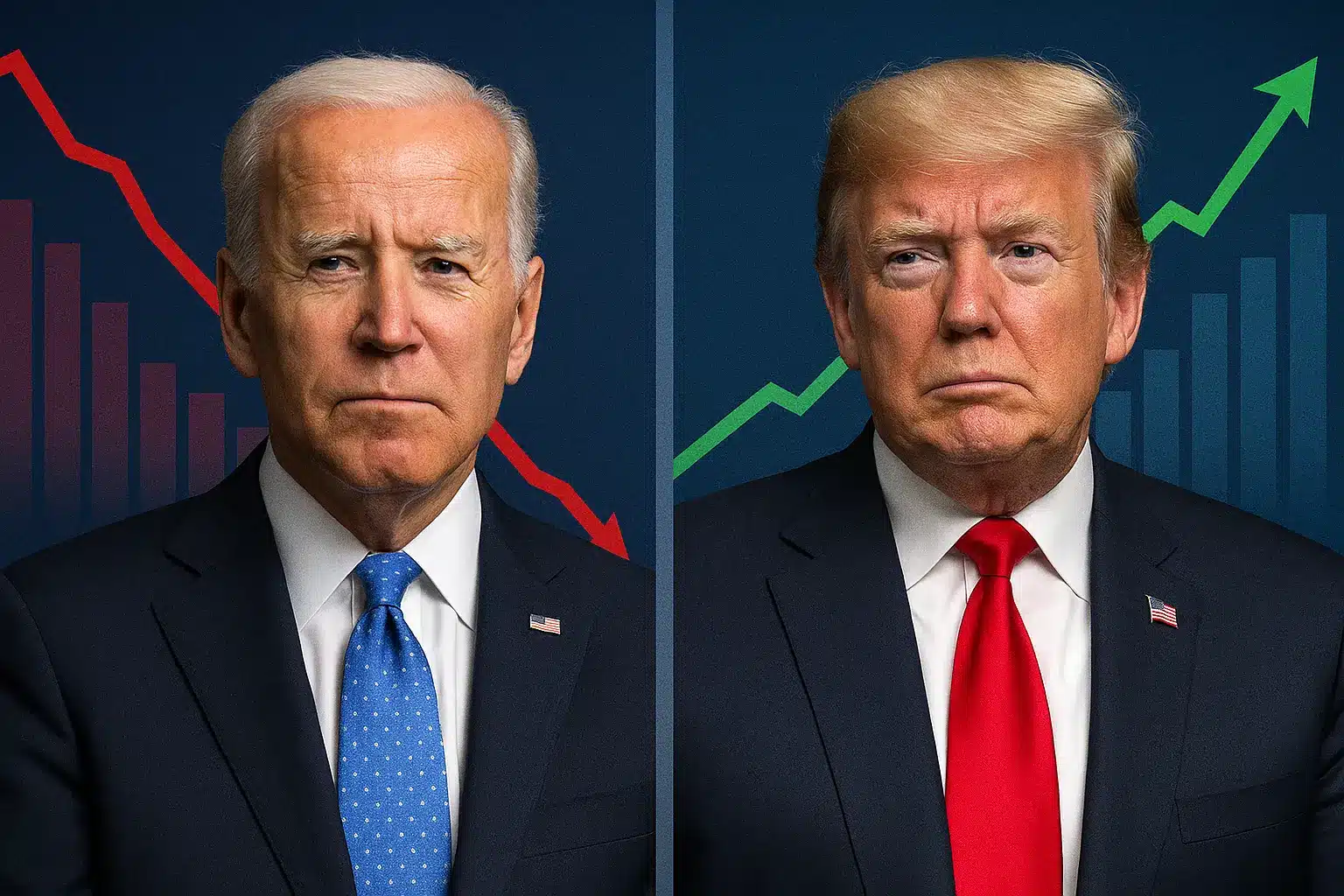The Biden vs Trump economy data 2025 debate is heating up with the release of newly analyzed, previously unpublished figures from the Census Bureau and Bureau of Labor Statistics (BLS). Economist Steve Moore of the Heritage Foundation has highlighted a series of findings that challenge common narratives about recent U.S. economic performance, sparking fresh discussions about job creation, real income growth, and income inequality.
According to Moore, the BLS overestimated job creation by 1.5 million positions during President Biden’s term, raising questions about the accuracy of official labor data. While median household income rose by $1,174 in Biden’s first five months (adjusted for inflation), the broader picture tells a different story—one that favors the Trump administration in terms of real income gains and reducing inequality.
The Questionable Accuracy of Job Creation Data
BLS Overestimation and Its Implications
Moore points to a significant discrepancy: official BLS statistics allegedly inflated job creation numbers by 1.5 million under Biden’s leadership. If true, this suggests that the labor market may have been weaker than reported, potentially misleading policymakers and the public about the pace of economic recovery.
Accurate employment figures are critical for shaping fiscal policy, determining interest rates, and guiding federal spending priorities. Overstated job growth can result in premature policy tightening or misplaced economic optimism.
(See related: US Jobs Report Falls Short of Expectations in July 2025)
Median Household Income: Early Gains vs. Long-Term Trends
Biden’s Early Income Increase
Biden’s first five months saw median household income rise by $1,174 after adjusting for inflation. This short-term improvement could be linked to pandemic recovery measures, stimulus checks, and wage adjustments in certain sectors.
Trump’s First-Term Advantage
However, over a full presidential term, the difference is stark:
- Trump’s first term: +$6,400 in real family income.
- Biden’s first term: +$551 in real family income.
This longer-term view suggests Trump’s economic policies—tax cuts, deregulation, and pro-growth measures—had a more sustained effect on household prosperity.
Hiring in 2025? Reach Millions Fast
Post your jobs for free on WhatJobs and connect with top talent across the U.S. today.
👉 Post a Job Now →Income Distribution and Inequality
Biden’s Uneven Gains
Moore’s breakdown shows troubling trends:
- The lowest income group lost purchasing power.
- The middle class experienced minimal change.
- The wealthiest households saw the largest gains.
Despite campaign promises to reduce inequality, Biden’s first term appears to have widened the gap between rich and poor.
Trump’s Across-the-Board Gains
By contrast, under Trump, all income brackets—from the poorest to the wealthiest—recorded real income gains. This not only boosted overall prosperity but also narrowed income inequality, challenging assumptions about partisan economic outcomes.
Why Inequality Matters in Economic Policy
Income inequality isn’t just a social talking point—it directly affects economic stability. Higher inequality can slow economic growth by reducing overall consumer spending, as lower-income households spend a greater portion of their earnings.
The Biden vs Trump economy data 2025 underscores how different policy approaches can produce very different results in wealth distribution. While Biden’s policies may have prioritized targeted investments, Moore’s analysis suggests they failed to reach the most vulnerable.
The Role of Unpublished Data in Economic Analysis
Access to unreleased Census Bureau data allowed Moore to present these findings ahead of mainstream reporting. Such early access can influence public discourse and policy debates, especially when the data challenges prevailing narratives.
This case highlights the importance of transparent and timely economic reporting to ensure that voters, lawmakers, and analysts have a clear, accurate picture of the nation’s economic health.
Policy Lessons from the Biden vs Trump Economy Data 2025
Economic Measurement Matters
Without accurate job numbers, the effectiveness of any administration’s economic policy is hard to assess.
Broad-Based Growth is Key
Policies that lift all income brackets simultaneously not only grow the economy but also reduce inequality, creating a more resilient middle class.
Short-Term Gains vs. Long-Term Trends
Early-term boosts in income can mask deeper structural issues. Sustainable, widespread income growth requires consistent policy direction over time.
Conclusion: Interpreting the Economic Scorecard
The Biden vs Trump economy data 2025 is more than a partisan talking point—it’s a study in how different economic strategies affect jobs, incomes, and inequality. While Biden’s presidency has seen pockets of short-term improvement, Trump’s first term appears to have delivered stronger long-term gains across all income groups, alongside a reduction in inequality.
For voters, policymakers, and job seekers alike, the takeaway is clear: economic outcomes are shaped as much by the quality and reach of policies as by the raw numbers reported in government releases.
FAQ – Biden vs Trump Economy Data 2025
Q1: What does the Biden vs Trump economy data 2025 show about job creation?
It suggests that the Bureau of Labor Statistics overestimated Biden-era job creation by 1.5 million, raising concerns over data accuracy.
Q2: How did median household income change under each president?
In Biden’s first term, median household income rose by $551, compared to $6,400 in Trump’s first term, adjusted for inflation.
Q3: Did income inequality improve under Biden or Trump?
Trump’s policies reduced income inequality by increasing incomes across all brackets, while Biden’s first term saw widening gaps between rich and poor.
Q4: Why is unpublished data important in economic analysis?
It can reveal trends before they’re widely reported, influencing policy discussions and public understanding of economic performance.




